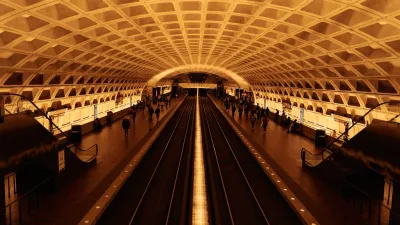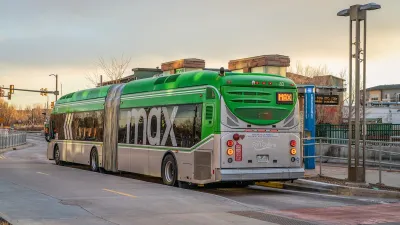This article from The Economist explains why America's transportation system is failing, and how the federal government's infrastructure funding mechanisms are contributing to the decline.
Comparing America's transportation menu to that of Western Europe, this article details some of the reasons behind various deficiencies in U.S. transportation.
"The Congressional Budget Office estimates that America needs to spend $20 billion more a year just to maintain its infrastructure at the present, inadequate, levels. Up to $80 billion a year in additional spending could be spent on projects which would show positive economic returns. Other reports go further. In 2005 Congress established the National Surface Transportation Policy and Revenue Study Commission. In 2008 the commission reckoned that America needed at least $255 billion per year in transport spending over the next half-century to keep the system in good repair and make the needed upgrades. Current spending falls 60% short of that amount.
If Washington is spending less than it should, falling tax revenues are partly to blame. Revenue from taxes on petrol and diesel flow into trust funds that are the primary source of federal money for roads and mass transit. That flow has diminished to a drip. America's petrol tax is low by international standards, and has not gone up since 1993 (see chart 3). While the real value of the tax has eroded, the cost of building and maintaining infrastructure has gone up. As a result, the highway trust fund no longer supports even current spending. Congress has repeatedly been forced to top up the trust fund, with $30 billion since 2008."
FULL STORY: Life in the slow lane

Alabama: Trump Terminates Settlements for Black Communities Harmed By Raw Sewage
Trump deemed the landmark civil rights agreement “illegal DEI and environmental justice policy.”

Planetizen Federal Action Tracker
A weekly monitor of how Trump’s orders and actions are impacting planners and planning in America.

The 120 Year Old Tiny Home Villages That Sheltered San Francisco’s Earthquake Refugees
More than a century ago, San Francisco mobilized to house thousands of residents displaced by the 1906 earthquake. Could their strategy offer a model for the present?

Housing Vouchers as a Key Piece of Houston’s Housing Strategy
The Houston Housing Authority supports 19,000 households through the housing voucher program.

Rural Population Grew Again in 2024
Americans continued to move to smaller towns and cities, resulting in a fourth straight year of growth in rural areas.

Safe Streets Grants: What to Know
This year’s round of Safe Streets for All grant criteria come with some changes.
Urban Design for Planners 1: Software Tools
This six-course series explores essential urban design concepts using open source software and equips planners with the tools they need to participate fully in the urban design process.
Planning for Universal Design
Learn the tools for implementing Universal Design in planning regulations.
Clanton & Associates, Inc.
Jessamine County Fiscal Court
Institute for Housing and Urban Development Studies (IHS)
City of Grandview
Harvard GSD Executive Education
Toledo-Lucas County Plan Commissions
Salt Lake City
NYU Wagner Graduate School of Public Service





























